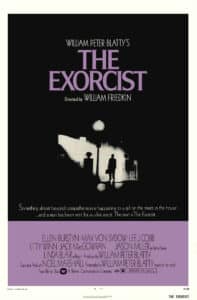
The Exorcist
Angela was born under an evil star. She is the victim of an earthquake in Haiti when she is still in her mother’s womb, her very conception is linked to a painful paternal choice of hers. Thirteen years later she seems like a serene and perfectly integrated girl, but she secretly cultivates the hope of communicating with the spirit of her mother and, together with her friend Katherine, she performs a forbidden magical rite. Instead of Angela’s mother, the two girls will come into contact with an evil entity that will take over their body. To understand what is happening to their daughters, the girls’ parents turn to Chris McNeil, Regan’s mother, the subject of a famous case of demonic possession 50 years earlier.
Now specialized in late sequels to historic brands of horror cinema, David Gordon Green manages to resurrect The Exorcist, after having done the same with Halloween.
The trilogy dedicated to Michael Myers ended in chiaroscuro, with alternating more or less successful moments until a failed epilogue. The Exorcist: The Believer is the result of a similar operation, which is linked to the 1973 progenitor by William Friedkin, forgetting all the sequels and offshoots that have followed over the years. Where that recognized masterpiece of the genre constantly lives again, in the form of restoration or celebration, without losing an ounce of its potential for terror, Green has the arduous task of proving himself up to it, introducing new characters and new situations.
Trying to please franchise maniacs and attract new viewers immediately proves to be a difficult task. The construction phase that prepares for the climax is particularly long and chooses to retrace Friedkin’s progress: an “exotic” beginning (there in Iraq, here in Haiti), the premises of the possession and finally the awareness of what happened which leads to the final exorcism. Green uses frenetic editing, designed to unnerve the viewer and convey anxiety.
An interesting approach, which leaves room for a minimum of in-depth analysis of the characters, before bringing back on stage the ninety-year-old Ellen Burstyn, a secular deus ex machina, who seems to dispel the tradition of exorcism as a practice reserved for a clergyman with unshakable faith. The inevitable redde rationem with the Evil One further develops the intent of horror secularization, through an “inclusive” collective rite, which places alongside the Catholic priest an African visionary expert in rootwork practices. Here the forced script creaks dangerously, under the blows of a pervasive political correctness that is more attentive to balancing and compensating than to constructing a truly disturbing narrative.








